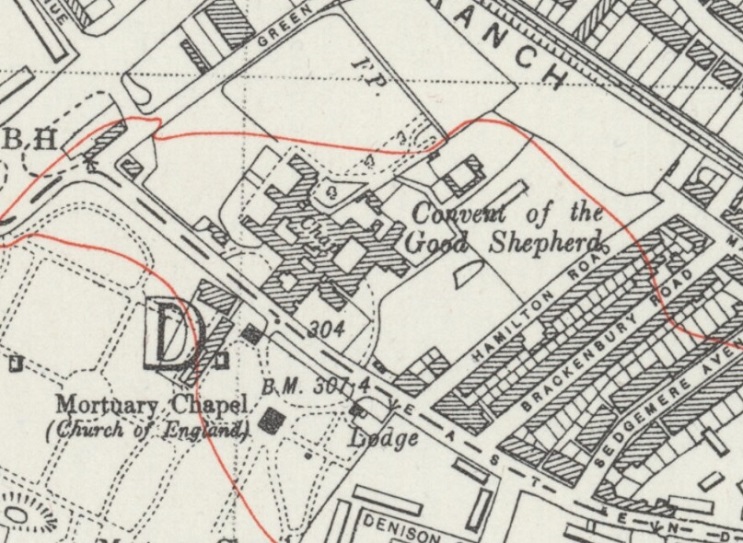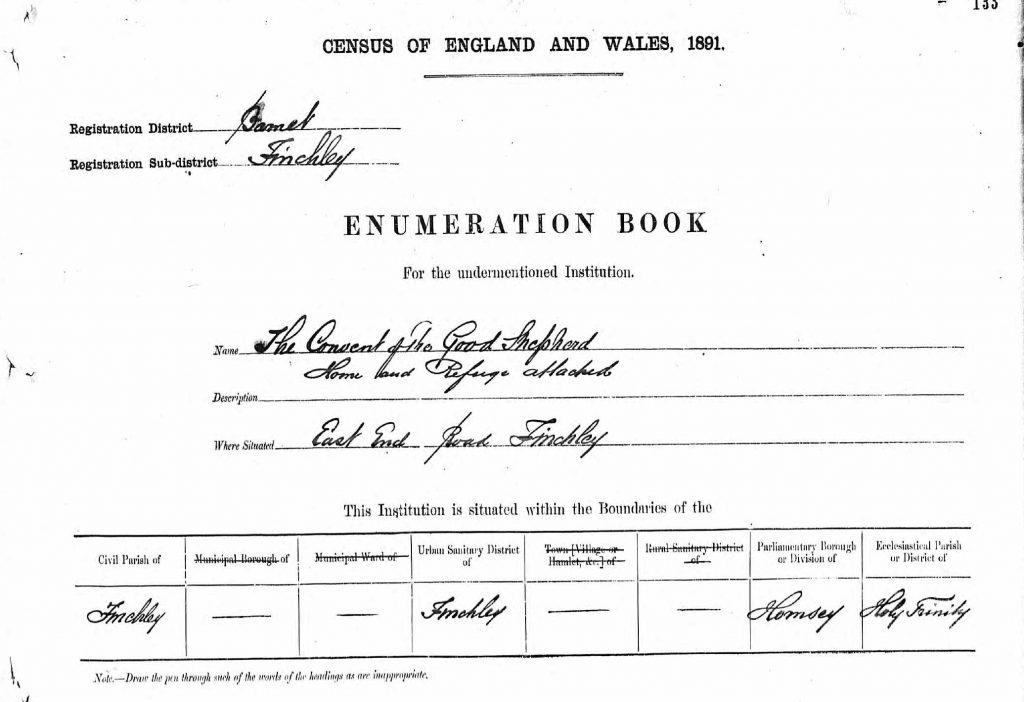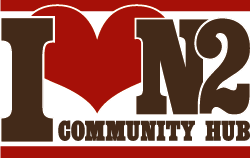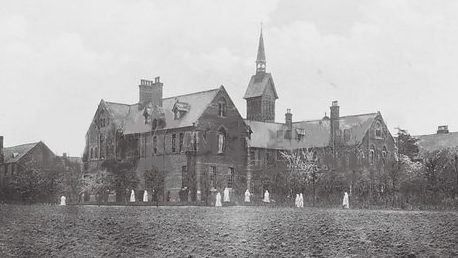Article by Alison Roberts (Published May 2003 and October 2023, The Archer)
Last month saw the Phoenix Cinema’s screening of Peter Mullan’s award winning The Magdalene Sisters – a shocking portrayal of life in one of Ireland’s Magdalene laundries. Ireland’s last asylum, in Waterford, closed in 1996, but who would have guessed that one of England’s last remaining Magdalene laundries was right here in East Finchley?
The Magdalene asylums were set up in the 19th century as a refuge for so-called fallen women. Operated by orders of nuns, the asylums financed their operations by functioning as commercial laundries, providing service to schools, prisons and other institutions. A strong emphasis was placed on Christianity, partly in order to make the women realise that they were sinners. Emphasis was also placed on self-sacrifice and duty, therefore paralleling Victorian class hierarchy, sanctioned female inferiority and self-abrogation. The inmates, through industrial work and religion, would ‘learn’ their appropriate class and gender roles. The women had to labour in silence – totally unpaid – 52 weeks a year, symbolically washing away their sins. They were forced to bind their breasts, had their heads shaved and were regularly humiliated and beaten.

On our doorstep
Built in 1866, East Finchley’s Magdalene laundry was situated on East End Road, opposite the St Marylebone Cemetery, occupying the area bordered by the railway, Hamilton Road and what is now the North Circular Road. The asylum, known as “The Good Shepherd Refuge” housed 170 women and 80 young girls, and was run by a Catholic order – The Sisters of the Good Shepherd.
Over the years, over 30,000 women and girls were imprisoned in these penal establishments, some for decades, to scrub away the sin of being pregnant or unwanted or being perceived to be in “moral danger” (for example, because of being very pretty). Although the women were referred to as prostitutes, this term was used to encompass not only women who sold sex for money but also single mothers, socialists, mill girls and girls who dressed ‘immorally’. The presumption that you were a sexual being was enough to condemn you. So the victims of abuse were guilty too and, by extension, those in danger of corruption by their fathers, brothers, cousins, or just men in general.

The disappeared
Although the asylum was intended as a reformatory for former female prisoners, census returns from the period show that many of those locked away in East Finchley’s Magdalene asylum were little more than young girls, some as young as 12-years-old. These girls became an early example of the “disappeared”, nearly always with the connivance of their own families. Technically, everyone who entered one of the laundries did so voluntarily, following the example of Mary Magdalene, the prostitute who became the “13th apostle” of Christ, after whom the convents were named. But there was nothing voluntary about the grinding work, the forced fasting or the weekly mortification sessions, when the women were stripped and laughed at for their vanity.
Washed up
The demise of the Magdalene laundries appears to have been driven more by economics than concern for the women’s welfare. By the 1960s, the wide availability of automatic washing machines reduced the requirement for the laundries to the extent that they were no longer viable.

Most of the original East Finchley convent and boarding school, by then known as St Joseph’s Training Home, were destroyed in a huge blaze one Sunday afternoon in October 1972. The inmates were shipped off to different parts of the country and only a handful of nuns stayed on in the surviving original villa. Some of the land was repurposed as playing fields for the adjoining Bishop Douglass RC School and the rest of the site was sold to Chalice Housing Association and became Thomas More estate. Only the road names (Clare, Helen, Juliana and Cecilia Close) provide a clue to the unsettling history of this comer of East Finchley.
Acknowledgements:
Mary Norris, Fiachra Gibbons, The Guardian, Cactus Television, Channel 4 Television, Glasgow University Library Special Collections, London Borough of Barnet Archive Department, Servite Houses.



